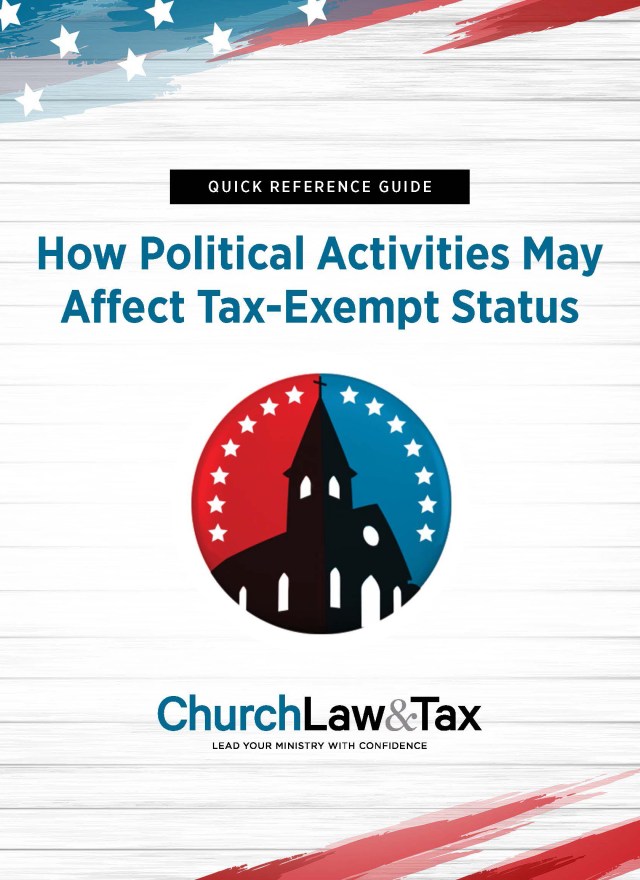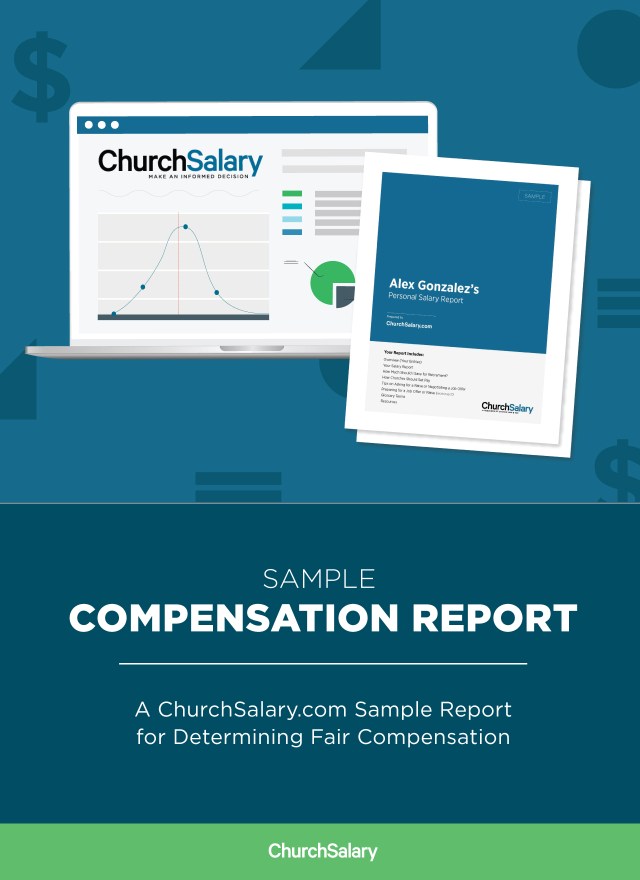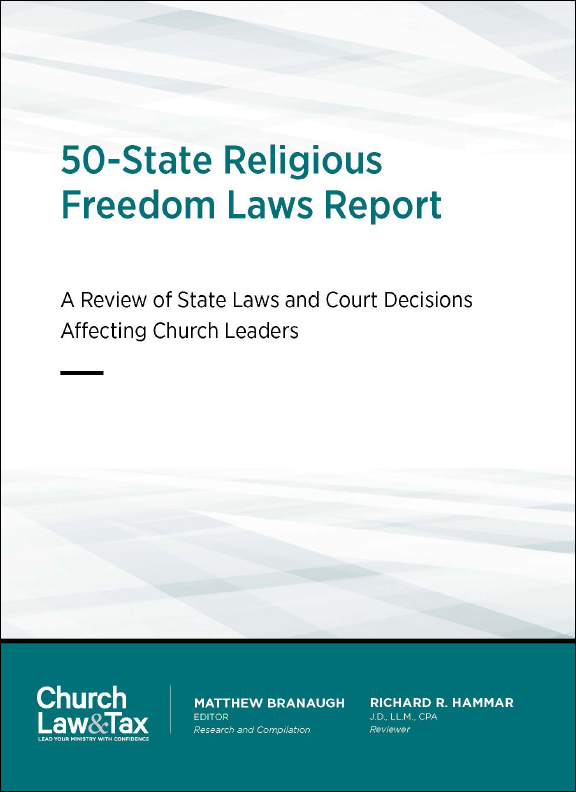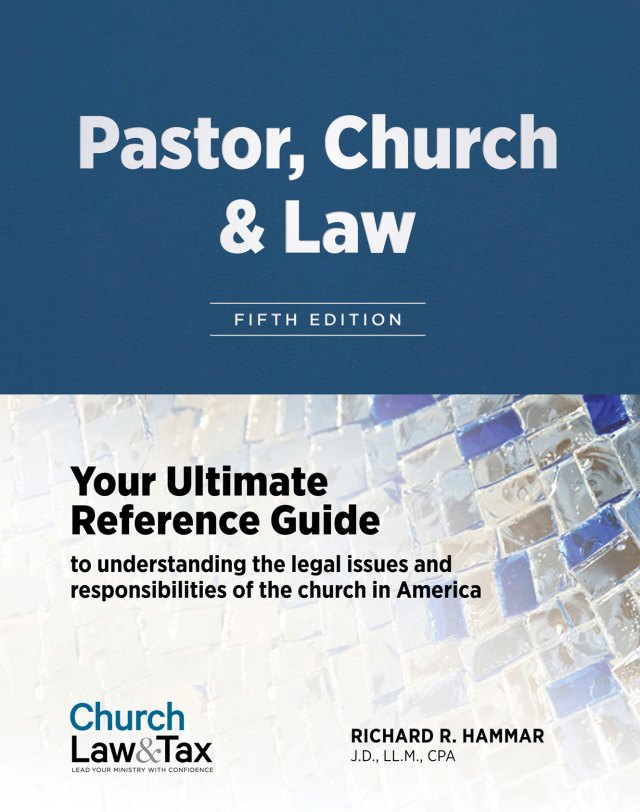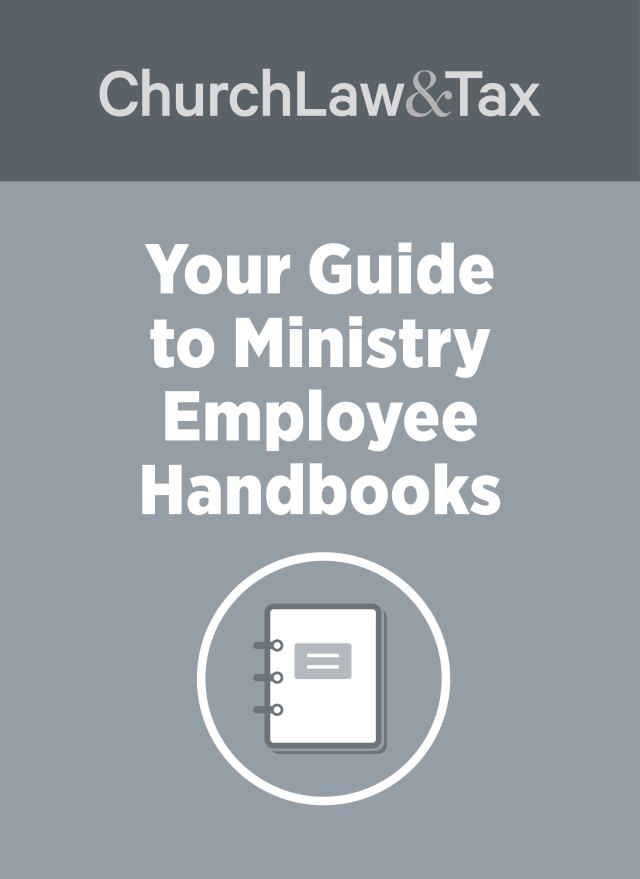• Key point. Most courts have concluded that they are barred by the first amendment guarantees of religious freedom and nonestablishment of religion from resolving challenges by dismissed clergy to the legal validity of their dismissals.
An Ohio court ruled that it was barred by the first amendment from resolving an internal church dispute regarding the tenure of the pastor. A church hired a new pastor, and an employment agreement was signed. The contract made no provision for the method of terminating the contract other than to require thirty-day notice for either party. A few years later, the church members held an election and 39 of the 40 members present voted to terminate the pastor’s employment. After the pastor refused to leave his position, the church asked a court to issue an injunction compelling him to do so, and ordering the church trustees to discontinue paying him. The pastor claimed that the court was without jurisdiction to resolve a purely ecclesiastical dispute such as this, and therefore it had to reject the church’s request for relief. The trial court ordered that a special election take place, at which time all members of the congregation as of a specified date would be eligible to vote on whether to retain the pastor. The order also contained arrangements to vote by absentee ballot for those unable to personally attend this election. Each party submitted several names of members whose membership status was disputed. Unfortunately, the church had two constitutions, and the parties disagreed as to which one was controlling. Both constitutions required that membership status be determined on the basis of the individuals’ presence at church services during the immediate ninety-day period or their donations to the church during that same time period. The two constitutions differed, however, in what constituted a majority. The earlier constitution called for a simple majority of the membership; the latter constitution called for the approval of two-thirds of the membership in order to enact any church business. The trial court determined that the earlier constitution, calling for a majority rule, was the valid constitution. It further determined that the votes of both parties’ disputed members qualified as members of the congregation and so would be included in calculating the results of the special election. Calculating both the absentee ballots with those in actual attendance, the court concluded that the final count was 41 in favor of retaining the pastor and 39 against. As a result, the church’s lawsuit was dismissed.
The church appealed this ruling. A state appeals court began its opinion by noting that the first amendment prohibits the civil courts from inquiring into religious doctrine, practice, or policy. Ecclesiastical matters, including the decision as to who should “preach from the pulpit,” are generally outside a state court’s jurisdiction. It quoted from an earlier decision by the United States Supreme Court:
The opinion [in Watson v. Jones, supra] radiates … a spirit of freedom for religious organizations, and independence from secular control or manipulations in short, power to decide for themselves, free from state interference, matters of church government as well as those of faith and doctrine. Freedom to select the clergy, where no improper methods of choice are proven, we think, must now be said to have federal constitutional protection as part of the free exercise of religion against state interference …. Purely secular matters, those not involving church doctrine or church policy, however, are not beyond the jurisdiction of a civil court. This is true of hierarchical churches, those churches with an outside governing body, as well as congregational churches that do not have any such outside governing body. The distinction between hierarchical and congregational churches becomes important, however, when reviewing a church’s decision as to “who shall preach from the pulpit.” In this regard, a civil court’s jurisdiction over an ecclesiastical decision made by a congregational church is limited to determining whether the decision was made by the proper church authority. This is so because a congregational church, unlike a hierarchical church, lacks a higher authority in determining whether such a decision was made by the appropriate church authority. Kedroff v. St. Nicholas Cathedral of Russian Orthodox Church, 344 U.S. 94 (1952).
The Tennessee court noted that the church in this case was congregational, and as such is governed by its constitution and bylaws. The church constitution provides that the church has the power to elect or dismiss a pastor and that at any official meeting, the majority rules. The court concluded that
the proper church authority, the church itself, decided to terminate the services of [the pastor]. At this point, the trial court’s inquiry should have gone no further. Despite the trial court’s good intentions in attempting to resolve the conflict between the parties, we find that it exceeded its jurisdictional authority when it ordered another election and unnecessarily interfered with the governing structure of the congregation. Because we find that … the proper church authority made the determination to terminate [the pastor’s] employment, the trial court erred in ordering another election and thereafter ordering that [the pastor] remain as pastor as a result of that election. We therefore reverse the decision of the trial court which retained [the pastor] as a result of the court-ordered election.
Application. This case illustrates a couple of important points. First, it demonstrates the confusion, and legal difficulties, that can arise when a church has multiple constitutions or bylaws. Unfortunately, in many churches there is considerable confusion as to the identification of the controlling constitution or bylaws. This is often due to the fact that the document has been amended several times over the years and there are multiple documents in circulation representing various versions. One way to reduce this confusion is for church leaders to identify the current document, with all amendments, and to place a date on the top of each page (for example, “Bylaws as of July 1, 1999”). This simple practice will greatly reduce the risk of confusion because of the existence of multiple versions of the same document. Second, the case illustrates the view of most courts that the first amendment prevents the civil courts from resolving disputes over pastoral tenure. Sacrificial Missionary Baptist Church v. Parks, 1997 WL 812168 (Ohio App. 1997). [Termination]
© Copyright 1999 by Church Law & Tax Report. All rights reserved. This publication is designed to provide accurate and authoritative information in regard to the subject matter covered. It is provided with the understanding that the publisher is not engaged in rendering legal, accounting, or other professional service. If legal advice or other expert assistance is required, the services of a competent professional person should be sought. Church Law & Tax Report, PO Box 1098, Matthews, NC 28106. Reference Code: m31 m47 m16 c0399
